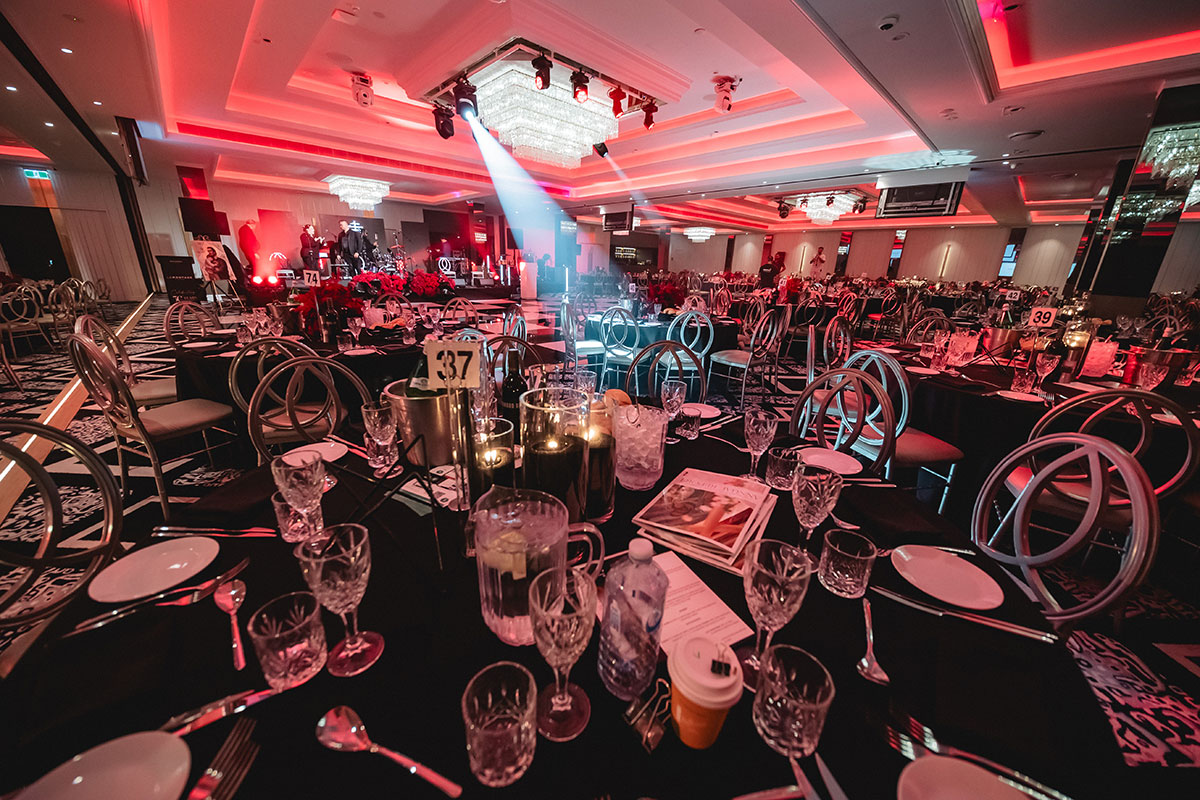The planning is officially underway! With your date and venue locked in and your guest list finalised, the next exciting wedding planning step is to create and send out your wedding invitations.
This formal announcement asking loved ones to attend one of the most important days of your life can be a daunting task. Not only does it provide all the crucial information which guests will need, it also sets the tone and style for the big day.
This guide will help you understand the options available, to select the perfect wedding invitation to reflect your style, and importantly, work within your budget.
This wedding guide will help you with:
- Do’s and Don’ts
- Choosing between DIY or professional services
- Digital versus traditional wedding invitations
- Wording and Etiquette
- Personalising, design, style and costs
- When to send wedding invitations
- Simplifying and managing RSVPs
How to Make Wedding Invitations: DIY vs. Professional Services
The first step is to decide who will create your invitation. Do you want to have them professionally made or add a personal touch by making them yourself?
For large weddings with an extensive guest list, we recommend using a professional service. This will take a lot of pressure off in terms of time and effort and is almost certainly worth the extra cost. If you do hire a professional, use a reputable company who will not let you down, and make sure to get a sample before giving the final go ahead.
Should you want to make your own invitations to add a personal touch, be aware of how long they will take, and only use high-quality materials to avoid a “cheap” look.
If the choice to make your own invitations is budget related, take all the materials into consideration first, because those can add up fast, plus the time it will take to assemble the invitations.
Traditional vs. Digital Wedding Invitations
We never recommend going completely digital when it comes to your wedding invitation. Even though digital invitations can save costs and are much easier to manage, a digital invitation may be missed, and older people may not always have ready access to their emails.
A printed invitation to a wedding feels more personal and makes for a lovely keepsake. A workable compromise if you are considering digital invitations, would be to still have some invitations printed for immediate family members, close friends and your older guests.
What to Write on a Wedding Invitation?
Wedding invitations typically have a set format which has stood the test of time. The basic structure remains largely the same, but with some room for adjustment as needed.
The Host
In Western culture, the bride’s parents would in the past have footed the bill. As times have changed, the host may be the groom’s parents, or both. Even with minimal financial support, it is still respectful to include the family. Couples who are not receiving any financial support may choose to simply begin with their own names.
The Request:
The level of formality depends on the style and theme of your wedding and may be anything from “Request the honour of your presence” to “Can’t wait to celebrate their love with you”.
The Couple:
Taking the centre stage, the couple’s names are portrayed in a larger font and style on a well-designed invite. Traditionally, the bride’s name precedes the groom’s.
Date and Time:
In more formal and traditional invitations, all the details are written out for instance time of day would be expressed as “five o’ clock”. More modern or casual invitations use numerals depending on design and style.
The Location:
Mostly only the venue name is required, unless there is a need to clarify the exact location such as at a private residence. The city and state should be included, with the state written out in full on more formal invitations.
Reception Information:
If the reception is at a different location and/or time, add it in for instance: “reception to follow at six o’clock at Curzon Hall”. Otherwise, a simple “reception to follow” will do.
Dress Code:
This is generally optional, as the style of the invitation should already indicate the level of formality. If there is an actual need to be specific, you should include the dress code.
RSVP Card:
A separate RSVP card is still standard for a formal wedding, and should be accompanied by a pre-addressed, stamped envelope. An RSVP should have a respond-by date, the option to accept/decline, and preferably dietary requirements. Many couples opt for digital RSVPs via a website link or QR code for convenience.
Wedding Invitation Templates and Custom Designs
If you have decided to design your own invitations, there are plenty of templates and apps online which you can use. There are also a lot of wedding invitation ideas to choose from.
- Canva is a user-friendly online design app which has a variety of customisable templates, and offers free and premium options.
- Etsy is an online marketplace where independent designers offer downloadable templates at a once-off cost.
- Minted offers premium quality wedding invitations which can be customised, printed and delivered to you. They include free recipient addressing on envelopes.
- Zazzle, Basic Invite and Vistaprint are a cost-effective middle ground where you can pick from designer-made templates, customise them yourself and have them printed and delivered to you.
- Remember that colours look different on screens than when printed, so it is advisable to get a sample printed when possible, and always check reviews for peace of mind.
Choosing the Right Wedding Invitation Style
When choosing your wedding invitation style, keep in mind that it is a glimpse of the celebration to come, and should broadly match your colour and theme – even if the details of your styling are not yet finalised.
If it is a formal occasion, stick to classic fonts with traditional wording. For more modern or informal weddings, you can use more creative layouts. The venue and location also play a role. A beach or garden wedding invitation would generally be less ornate and luxurious than a ballroom wedding.
The Cost of Wedding Invitations
The cost of wedding invitations is usually around 2% to 5% of the total wedding budget and includes design, printing, assembling and delivery. That said, there is no hard and fast rule. Below are rough guidelines and prices vary greatly according to custom design, quantities, paper quality, printing techniques and extras such as envelopes, ribbon and wax seals.
- If you are looking for a budget-friendly option, DIY may be the way to go but it will be a bit more time and effort.
- Digital invitations can help keep costs down, although, as mentioned, we recommend having some invitations printed.
- Printing on standard paper ranges from $0.50 to $2.00 per wedding invitation.
- A mid-range option with a professional, customisable template will cost $2 to $7, and premium printing will range from $6 to $12 per invitation.
- When it comes to custom-designed, luxury wedding invitations, it gets a bit pricier at $10 to $20+ per invitation.
- These are rough guidelines and prices vary greatly according to custom design, quantities, paper quality, printing techniques and extras such as envelopes, ribbon and wax seals.
Guidance on choosing your template and style, wording, etiquette and recommended suppliers is generally included in a wedding planner’s fee.
RSVP Management: Simplifying the Process
Having an efficient RSVP tracking system will save a lot of time and stress by keeping accurate track of the number of guests. Make sure you have a system which works for you. We recommend using a spreadsheet, or an app which can export the list for you and which backs up to the cloud.
Also keep in mind that you will be sharing the spreadsheet with suppliers such as your caterers, so your RSVP list is ideal for keeping track of details such as dietary requirements.
Two weeks prior to the RSVP deadline, you can send out a friendly reminder or call those who have not yet responded, and again after the deadline.
Wedding Invitation Etiquette: Do’s and Don’ts
Do:
- Send invitations on time
- Include all key details
- Use full names of couples, individuals, and children.
- Have someone else proofread before printing or sending out
- Respect cultural or religious traditions when applicable
Don’t
- Send out invitations without confirming all the key details
- Use vague wording like “and family” or nicknames
- Mention registry or gifts on the main invitation.
- Make it complicated to RSVP
- Include too much information on the main invitation
When to Send Wedding Invitations?
Wedding invitations should always be sent on time, and the general recommendation is to send 8 – 12 weeks before the wedding to local guests. Invitations to destination weddings should be sent at least 3 – 4 months before the wedding. A “Save the Date” card is advisable and can be sent 6 – 12 months in advance.
Your Wedding Invitation Journey Starts Here
Wedding invitations are a significant part of planning your wedding and should fit the style and theme of your wedding while providing all the main information clearly and concisely.
At Navarra Venues we are experts at all things wedding, and our highly skilled, experienced wedding co-ordinators can advise on finer details. Browse our weddings page to view our venues for inspiration and to find your perfect wedding theme and style.




